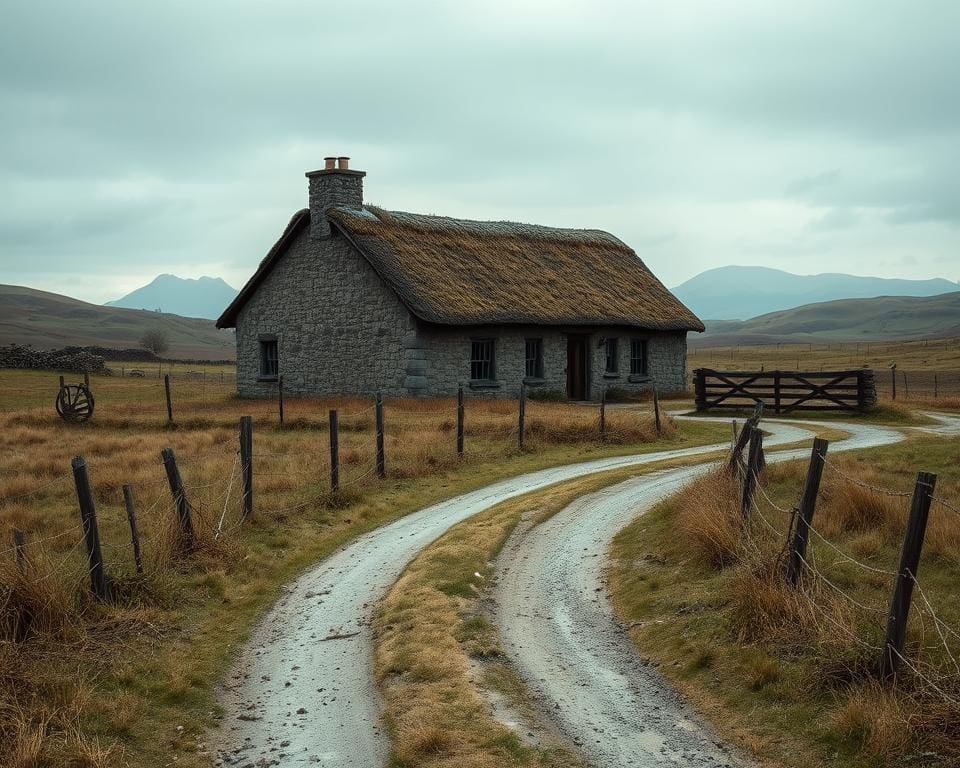Upgrading rural homes in Northern Ireland is a vital endeavour that aims to improve the quality of life for communities residing in these picturesque areas. As we explore the question, “How do you upgrade rural housing in Northern Ireland?”, we must recognise the significance of enhancing not only the physical structures but also the living conditions. Rural housing enhancement strategies encompass addressing energy efficiency, ensuring homes are equipped to meet modern standards, and tackling the unique challenges such as resource availability and skilled labour shortages. The ultimate goal is to create sustainable living environments that accommodate a growing population while preserving the charm of Northern Ireland’s rural landscapes.
Understanding the Need for Rural Housing Upgrades
Upgrading rural housing carries immense significance in addressing not only the aesthetic aspects but also the fundamental quality of life for residents. The importance of upgrading rural housing cannot be overstated, as it directly impacts health, safety, and overall well-being. Improved living conditions foster a sense of community pride and cohesion, while enhancing energy efficiency helps combat climate change effectively. Furthermore, environmentally sustainable practices in rural housing upgrades offer lasting benefits for local ecosystems and resources.
Importance of Upgrading Rural Housing
The necessity for modern amenities in these homes is increasingly critical. Many rural homes lack heating, insulation, and basic facilities, which contributes to substandard living conditions. By investing in upgrades, not only do individuals benefit from increased comfort, but entire communities can experience revitalisation through enhanced infrastructure. This fosters economic growth and creates new job opportunities in construction and maintenance sectors, thus highlighting the broad societal gains associated with these improvements.
Current Conditions of Rural Housing in Northern Ireland
The current conditions of rural housing in Northern Ireland reveal a pressing need for action. Reports from the Northern Ireland Housing Executive indicate that a significant portion of rural homes are classified as inadequate, lacking essential services such as running water and proper drainage systems. Local community surveys support these findings, underscoring issues like dilapidation, insufficient energy efficiency, and the absence of modern conveniences. Such conditions not only affect individual households but also pose challenges to the sustainability of rural communities at large.

How do you upgrade rural housing in Northern Ireland?
Upgrading rural housing requires a considered approach that prioritises specific residential needs. The processes begin with assessing individual housing needs, allowing for a tailored strategy to emerge. Every home has unique requirements based on its structure, usage, and the lifestyle of its occupants. This initial assessment lays the groundwork for identifying key areas for improvement, guiding the necessary modifications to enhance living conditions.
Assessing Individual Housing Needs
Successful enhancement of rural homes starts with understanding their current state. This can involve engaging with local authorities and conducting surveys that provide valuable insights into residents’ experiences. Community consultation becomes vital in this phase, ensuring that local perspectives shape the assessment process. Knowing the specific needs of each household can reveal insights into essential upgrades required, thus facilitating more effective decisions.
Identifying Key Areas for Improvement
Upon establishing individual housing needs, attention shifts towards identifying key areas for improvement. Common challenges often include inadequate insulation, inefficient heating systems, and lack of accessibility features. Addressing these issues can significantly uplift overall quality of life. Enhancements to thermal efficiency can reduce energy bills, while modernised heating solutions improve comfort. Additionally, implementing accessibility modifications can make homes more accommodating for all residents, reflecting a comprehensive strategy to upgrade rural living.
Rural Housing Upgrade Techniques
Upgrading rural housing requires a thoughtful approach to enhance both comfort and sustainability. Implementing various rural housing upgrade techniques can bring about significant benefits, particularly through energy efficiency solutions and necessary structural enhancements and repairs. These techniques not only improve the livability of rural homes but also contribute to a healthier environment.
Energy Efficiency Solutions
Energy efficiency solutions play a vital role in reducing energy consumption and costs. Key strategies include:
- Modern insulation: Proper insulation in walls and roofs minimises heat loss, ensuring homes stay warm in winter.
- Double-glazing: Installing double-glazed windows can greatly enhance thermal performance, reducing reliance on heating.
- Renewable energy systems: Solar panels provide a sustainable energy source, lowering electricity bills while reducing carbon footprints.
By adopting these energy efficiency solutions, homeowners can significantly cut down on energy expenses while making a positive impact on the environment.
Structural Enhancements and Repairs
Alongside energy improvements, structural enhancements and repairs are crucial for the longevity of any rural dwelling. Common upgrades include:
- Roof repairs: Ensuring roofs are sound and watertight protects the interior from weather damage.
- Damp proofing: Addressing damp issues prevents long-term structural damage and health risks associated with mould.
- Quality materials: Utilising materials that comply with modern building regulations enhances safety and durability.
Incorporating expert recommendations from the Building Research Establishment can guide best practices during these upgrades. Homeowners should be proactive in implementing these upgrades to ensure their rural homes remain safe, efficient, and comfortable.
Enhancing Rural Housing in Northern Ireland
Enhancing rural housing in Northern Ireland requires a thoughtful approach that integrates environmental responsibility with modern conveniences. Adopting sustainable practices not only reflects a commitment to the environment but also enriches the living experience in rural areas.
Utilising Sustainable Materials
Utilising sustainable materials plays a pivotal role in the upgrade of rural homes. Reclaimed wood, eco-friendly insulation, and locally sourced stone contribute to reduced carbon footprints while offering aesthetic charm. The choice of materials reflects a deep respect for the local environment, encouraging the preservation of natural resources.
Incorporating Modern Technology
Incorporating modern technology transforms the rural living experience. Smart home systems allow for enhanced energy management, ensuring homes are not only comfortable but also energy-efficient. Remote working facilities improve lifestyle convenience, allowing residents to engage with their work while enjoying the tranquillity of the countryside. This modern twist on traditional living underscores the importance of keeping pace with advancements without compromising the rustic charm many cherish.
Northern Ireland Rural Housing Development Plans
Addressing the pressing need for improved living conditions, various initiatives focused on Northern Ireland rural housing development are currently underway. These plans are essential in ensuring that rural areas receive necessary resources and attention. Emphasising collaboration among stakeholders fosters sustainable progress in housing upgrades.
Government Initiatives and Funding Opportunities
The government actively champions rural housing improvements through diverse initiatives and funding opportunities. Various grants and financial aids are allocated to enhance housing conditions, enabling families to access better living standards. These contributions help alleviate economic burdens while fostering community well-being. The importance of government support cannot be overstated, as it provides vital leverage for local authorities to implement impactful housing upgrades.
Community-Based Development Projects
Community-based development projects play a crucial role in transforming rural landscapes. By engaging local residents, these projects create a sense of ownership and pride within communities. Successful examples demonstrate how collaborative efforts lead to remarkable improvements in housing quality. Initiatives include restoring dilapidated homes and introducing innovative designs that reflect local heritage. Such community-led approaches contribute significantly to the overall vision of sustainable rural housing in Northern Ireland.
Strategies for Improving Rural Housing
Upgrading rural housing in Northern Ireland requires strategic frameworks that emphasise collaboration and community involvement. Effective strategies for improving rural housing not only enhance living conditions but also enrich the local environment through engaged partnerships.
Collaborative Approaches with Local Authorities
Establishing collaborative approaches with local authorities forms the backbone of successful housing upgrades. Local councils possess valuable insights and resources that can streamline the upgrading process. By working in tandem with these authorities, residents can access funding opportunities and technical support essential for sustainable development.
Such partnerships often lead to tailored strategies that reflect the unique characteristics of each rural community, ensuring that improvements align with local needs and regulations.
Involving the Community in the Upgrade Process
Involving the community in the upgrade process fosters a sense of ownership and pride among residents. Engaging locals in planning and decision-making creates an inclusive environment where their voices are heard. Community-driven initiatives can yield innovative ideas and solutions that reflect the aspirations of those directly impacted.
Active participation encourages resilience and sustainability, helping to cultivate a vibrant communal identity while addressing housing needs effectively.
Upgrading Rural Homes in Northern Ireland
Exploring the process of upgrading rural homes in Northern Ireland reveals numerous compelling case studies of successful upgrades. These examples illustrate various methods that led to significant improvements in the quality of life for residents. From energy-efficient solutions to aesthetic enhancements, each case study demonstrates the versatility and potential of rural housing upgrades.
Case Studies of Successful Upgrades
One notable case involved the renovation of a traditional stone cottage in County Down. By incorporating modern insulation techniques and renewable energy systems, the project achieved a remarkable reduction in energy consumption. Residents reported not only lower utility bills but also increased comfort and a more sustainable living environment.
Another inspiring example comes from a village in County Antrim, where a community-led initiative transformed several derelict properties into vibrant family homes. The collaboration among local authorities, builders, and residents ensured that the design choices reflected the cultural heritage of the area while addressing contemporary housing needs. This project demonstrates how empowerment and community involvement can lead to successful outcomes in upgrading rural homes in Northern Ireland.
Learning from International Best Practices
Learning from international best practices can offer valuable insights for Northern Ireland. Case studies from several European countries highlight effective strategies for upgrading rural housing. For instance, Scandinavian countries have successfully implemented energy-efficient technologies that blend seamlessly with traditional architecture. These initiatives not only improve energy performance but also enhance the visual appeal of homes.
By analysing these global examples, Northern Ireland can adopt innovative approaches while tailoring them to local contexts. Integrating lessons from these case studies of successful upgrades can inspire new projects, ensuring that rural housing remains both functional and aesthetically pleasing for generations to come.
Rural Housing Renovation Solutions
Renovating rural housing in Northern Ireland requires a thoughtful blend of modern techniques and traditional values, ensuring that homes can thrive without losing their unique character. Effective renovation approaches for rural homes are rooted in sustainability, aiming to enhance energy efficiency while respecting the environment. By embracing solutions, such as improved insulation techniques and the integration of renewable energy sources, homeowners can drastically reduce their carbon footprint and create comfortable living spaces.
Beyond energy efficiency, the aesthetic aspects of rural housing renovations play an essential role in enhancing overall living conditions. Upgrading fixtures, employing sustainable materials, and incorporating smart technology not only beautify homes but also contribute to their functionality. The goal is to create not just houses, but thriving habitats that meet contemporary demands while honouring local heritage.
As the need for modernisation in rural areas becomes increasingly evident, these rural housing renovation solutions provide a pathway for transformation. By implementing these effective renovation approaches for rural homes, communities can ensure that their housing stock evolves alongside changing lifestyles, positioning themselves for a sustainable future where tradition and innovation coexist harmoniously.









